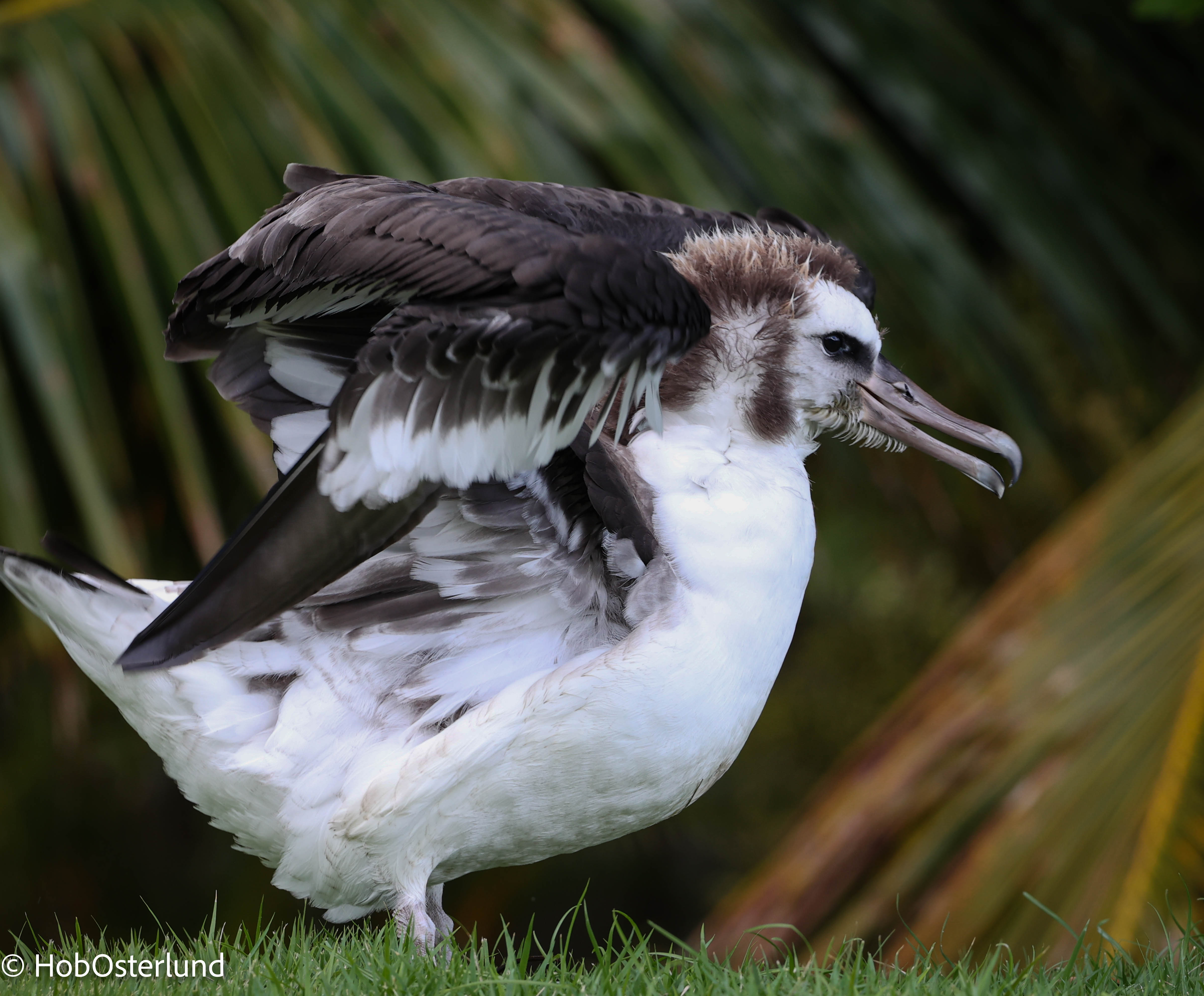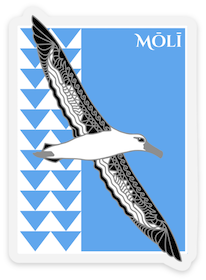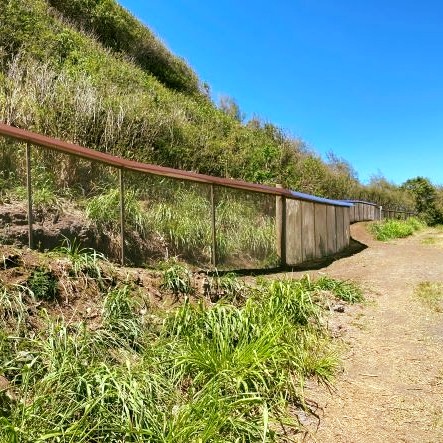 A Laysan Albatross chick gets close to fledging, photograph by Hob Osterlund
A Laysan Albatross chick gets close to fledging, photograph by Hob Osterlund
The Laysan Albatrosses or Mōlī Phoebastria immutabilis have just come off a good breeding year on the Hawaiian Island of Kauai, a distinct improvement over the previous season, according to citizen scientist Hob Osterlund of the Kauai Albatross Network and Louise Barnfield who works with the albatrosses that breed within the Kilauea Point National Wildlife Refuge (KPNWR).

Tribal Mōlī logo designed by Rae Okawa of Native Hawaii Designs for the Kauai Albatross Network
Of an island-wide total of 352 occupied nests with eggs, 243 hatched (69.0%) and 201 chicks fledged (57.1%). Hob reports to ACAP Latest News that these success figures are the second best in 10 years, after 57.97% for 2014/15. Iin the previous 2022/23 season only 121 chicks fledged on Kauai. Louise writes “This was in large part due to a devastating feral pig predation event that destroyed many eggs on the refuge in a relatively remote area. Since then, our extensive predator-proof fence project was completed in time for this season, which has been a tremendous success in reducing predation”. She continues “Last season was also a bad year for avian pox, with every one of our refuge chicks being affected to some degree, and many quite severely. I believe it was the same across the island. Although we cannot be 100% certain of the cause of deaths, I believe a number of our refuge deaths may have been due either directly or indirectly to their infections. This year we have noticed hardly any avian pox; only a very few refuge chicks had just slight signs of small lesions quite late on in the season”. The KPNWR colony accounts for roughly 40-45% of all nests on the island each year, the rest breeding mostly on private lands such as in Princeville and elsewhere along the north-east shore.

The new predator-proof fence within the Kilauea Point National Wildlife Refuge, photograph from the US Fish & Wildlife Service
The totals given do not include occupied nests within the Pacific Missile Range Facility Barking Sands (PMRF) where all the eggs are removed to reduce the risks of collisions between breeding adults and military aircraft. However, some fertile PMRF eggs (detected by candling) are used to replace infertile eggs laid elsewhere on the island. Some of the nests receiving adoptive eggs are occupied by female-female pairs, which usually lay infertile eggs. These adopted eggs become part of the overall hatch and fledge percentages. In the latest (2023/24) breeding season a total of 40 eggs was translocated to private lands and the KPNWR. Of these, 26 hatched and c. 21 fledged. One of the private lands chicks that did not fledge was crushed by a bull that pushed through a hog wire fence, a second succumbed to malnutrition. In the previous season, 26 adoptive eggs resulted in only nine fledglings. After a decade-long gap, adoptive eggs from the at PMRF were once again translocated to nests within the KPNWR in 2022/23 (12 eggs, only one fledged due to predation by pigs) and in 2023/24 (23 eggs, 15 hatched, 11-13 fledged).
With thanks to Louise Barnfield and Hob Osterlund.
John Cooper, Emeritus Information Officer, Agreement on the Conservation of Albatrosses and Petrels, 27 August 2024

 Español
Español  English
English  Français
Français